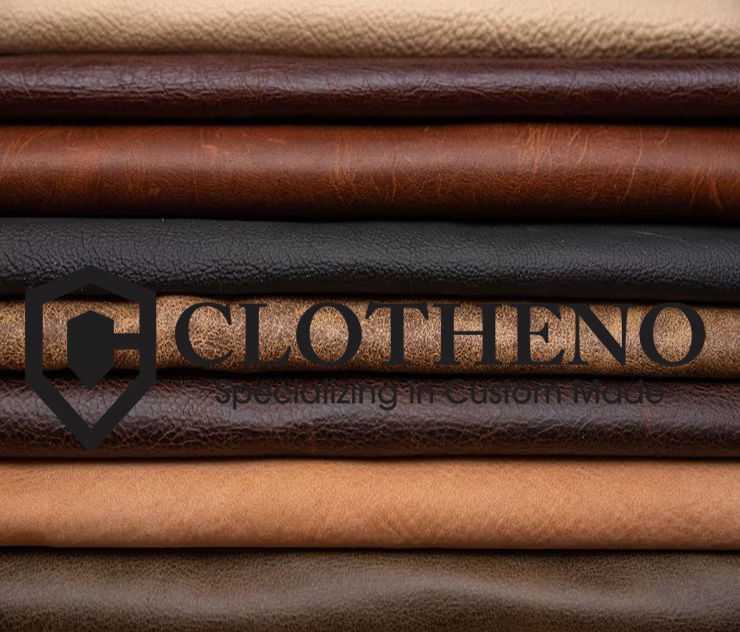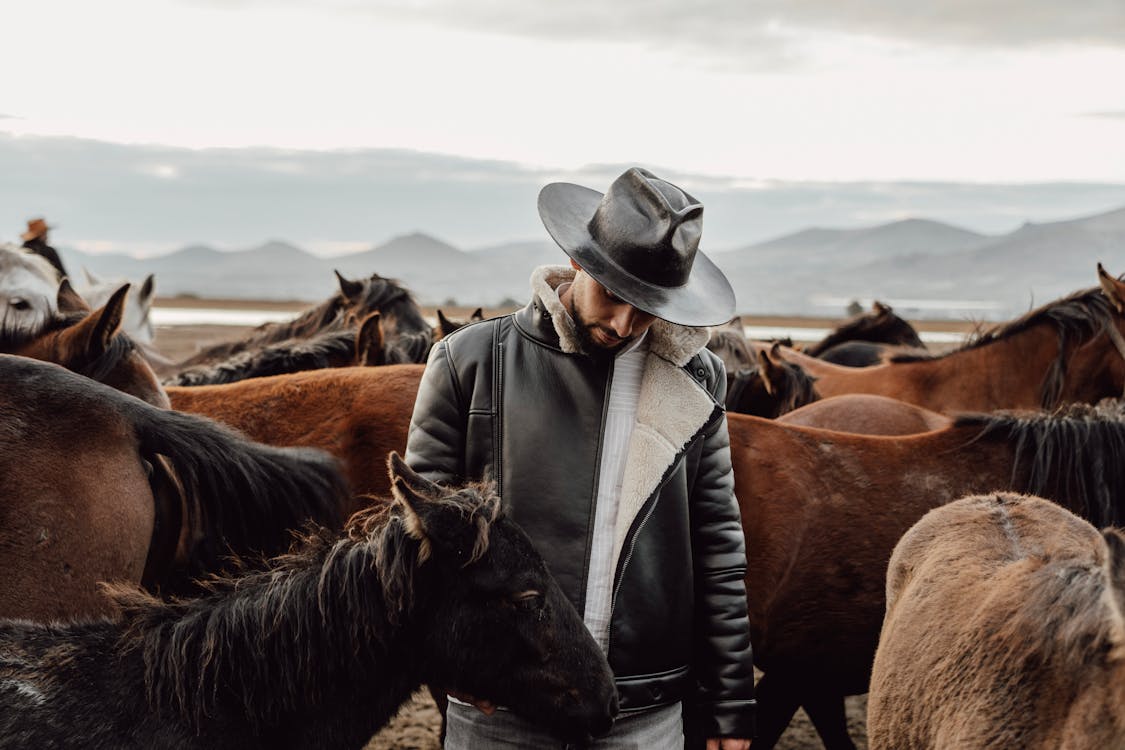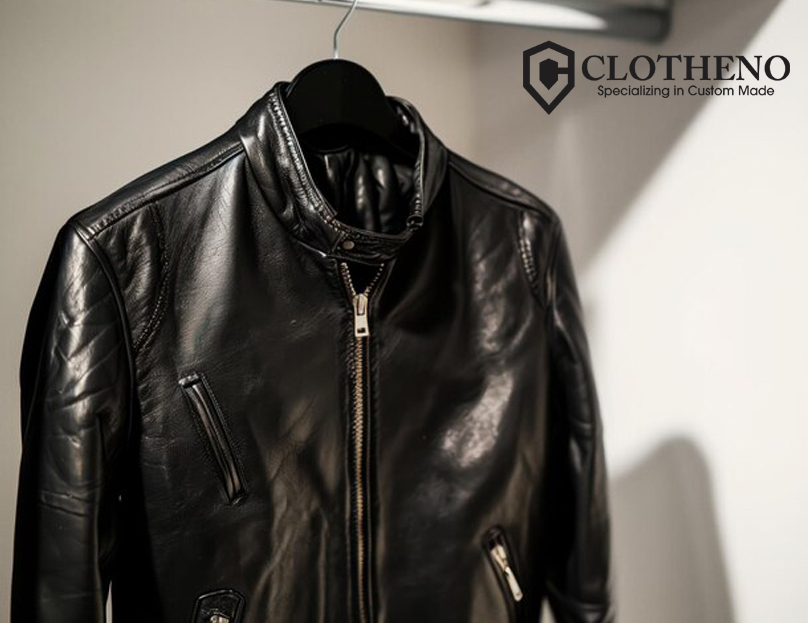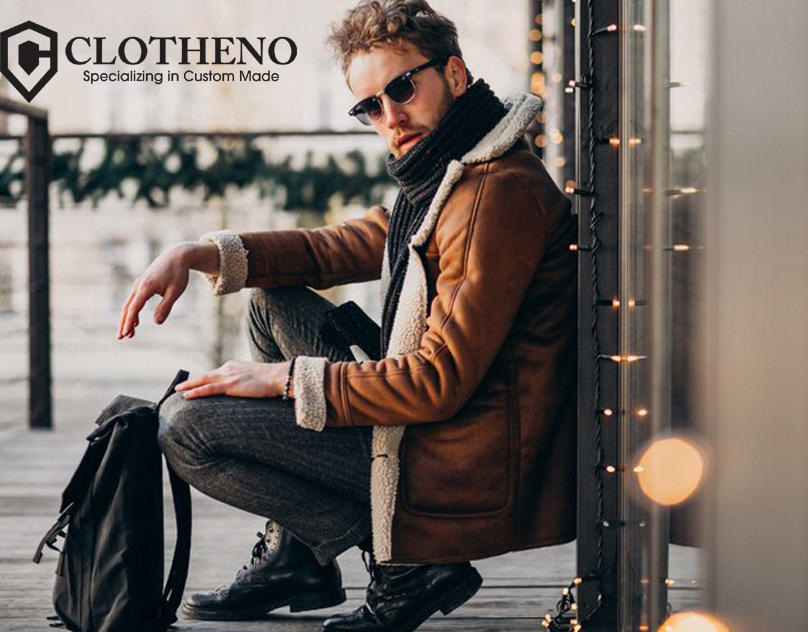
The allure of a Men’s leather jacket lies not only in its stylish exterior but also in the quality and character of the leather used. Crafting a timeless leather jacket involves careful consideration of the type of leather, as each variety brings unique characteristics to the table. In this exploration, we delve into various leather types commonly used for creating iconic leather jackets, each contributing to the garment's distinct aesthetic and durability.
Exploring some famous types of men’s leather jackets:
Men’s Vintage Leather Jacket:
A men's vintage leather jacket exudes timeless style with its worn-in character and classic silhouette, telling a story of fashion evolution and enduring appeal. Each scuff and patina on a vintage leather jacket whispers tales of past adventures, making it a cherished and stylish relic of sartorial history.
Men’s Genuine Leather Jacket:
A genuine leather jacket for men epitomizes quality and sophistication, crafted from authentic hides that age gracefully, ensuring a wardrobe staple that exudes both durability and refined style. The rich texture and distinctive aroma of genuine leather elevate the jacket, making it a symbol of enduring elegance and rugged authenticity.
Men’s High Collar Leather Jacket:
The high collar leather jacket for men boasts an effortlessly cool aesthetic, framing the neck with a sleek and modern silhouette, adding an edgy touch to any ensemble. Elevating both style and functionality, this jacket's high collar provides an extra layer of warmth while making a bold statement in contemporary fashion.
Men’s Collar Leather Jacket:
A men's collar leather jacket exudes a classic yet rugged charm, framing the neckline with timeless sophistication, while its durable construction ensures both style and durability for every adventure. This versatile piece seamlessly blends vintage elegance with a modern edge, making it a must-have for any discerning wardrobe.
Men’s Zipper Leather Jacket:
Men's zipper leather jackets epitomize urban cool, seamlessly fusing edgy design with functional detailing for a contemporary and versatile wardrobe staple. The iconic front zipper not only adds a touch of rebellious style but also allows for effortless layering, making it the epitome of modern, on-the-go fashion.
Men’s Winter Leather Jackets:
A men's winter leather jacket blends timeless style with essential warmth, offering a rugged yet sophisticated outer layer for cold-weather ensembles. With insulating properties and a sleek design, it becomes the go-to choice for those seeking both comfort and fashion during chilly seasons.
Leather types:
Cowhide Leather:
Characteristics: Durable, rugged, and resistant to wear.
Cowhide leather is the most common choice for crafting leather jackets. Its thickness and sturdiness provide excellent protection against the elements, making it ideal for motorcycle jackets. Over time, cowhide develops a natural patina, enhancing its vintage appeal.
Lambskin Leather:
Characteristics: Soft, supple, and lightweight.
Lambskin leather is prized for its buttery soft texture and lightweight feel. Although less rugged than cowhide, lambskin offers a luxurious and sleek appearance. It is a popular choice for fashion-forward leather jackets, providing a more tailored and refined look.
Goatskin Leather:
Characteristics: Durable, lightweight, and water-resistant.
Goatskin leather strikes a balance between toughness and suppleness. It is often used in aviator-style jackets due to its natural resistance to water. Goatskin jackets are known for their resilience and ability to withstand a variety of weather conditions.
Buffalo Leather:
Characteristics: Thick, robust, and textured.
Buffalo leather is known for its thickness and natural texture, lending a distinct ruggedness to jackets. While it may be heavier than cowhide, it provides excellent protection and develops a unique grain pattern over time. Buffalo leather jackets exude a sense of adventure and durability.
Pigskin Leather:
Characteristics: Tough, durable, and breathable.
Pigskin leather is appreciated for its toughness and breathability. Although it may not have the same level of suppleness as other types, it is an excellent choice for jackets that require durability. Pigskin is often used for work jackets and outdoor wear.
Sheepskin Leather:
Characteristics: Soft, lightweight, and naturally insulating.
Sheepskin leather combines softness with natural insulating properties, making it a suitable choice for jackets designed for colder climates. These jackets are not only stylish but also provide warmth without excessive bulk.
Exotic Leathers:
Examples: Alligator, crocodile, snake, and ostrich.
For those seeking a truly unique and luxurious jacket, exotic leathers offer a range of options. Alligator, crocodile, snake, and ostrich leathers are prized for their distinctive textures and patterns. Jackets crafted from exotic leathers make bold fashion statements and are often associated with high-end designer pieces.
Chrome-Tanned Leather:
Characteristics: Soft, supple, and water-resistant.
Chrome-tanned leather is processed using chromium salts, resulting in a softer and more supple material. It is commonly used for fashion leather jackets, offering versatility in terms of design and texture.
Conclusion: Choosing Timelessness in Leather:
The choice of leather type is a critical decision in crafting a timeless leather jacket. Each type brings its own set of characteristics, contributing to the jacket's overall style, durability, and comfort. Whether opting for the rugged appeal of cowhide, the luxury of lambskin, or the exotic allure of alligator, the selection of leather is a journey towards creating a jacket that not only complements your style but also stands the test of time.
Common FAQ’s:
Q: What is the most common type of leather used for men's jackets?
A: Cowhide leather is the most common choice for men's leather jackets. Its durability, rugged texture, and ability to develop a rich patina over time make it a classic and popular option.
Q: How does lambskin differ from other leather types?
A: Lambskin leather is known for its soft and supple texture. It is lighter and more luxurious than cowhide, making it a preferred choice for those seeking a sleek and tailored appearance in their leather jackets.
Q: Are there leather types suitable for warmer climates?
A: Yes, pigskin leather is known for its breathability and toughness, making it suitable for warmer climates. It provides durability without compromising comfort.
Q: What is the appeal of buffalo leather for crafting men's jackets?
A: Buffalo leather is valued for its thickness and natural texture, imparting a rugged and adventurous aesthetic to jackets. It offers excellent protection and develops a unique grain pattern over time.
Q: Are there leather options with natural insulating properties?
A: Sheepskin leather combines softness with natural insulating properties, making it an ideal choice for jackets designed to provide warmth without excessive bulk. It is particularly suitable for colder climates.
Q: What are exotic leathers, and why are they sought after?
A: Exotic leathers, such as alligator, crocodile, snake, and ostrich, offer unique textures and patterns, making jackets crafted from these materials stand out. They are often associated with high-end and luxurious designer pieces.
Q: How does vegetable-tanned leather differ from chrome-tanned leather?
A: Vegetable-tanned leather is processed using natural plant extracts, resulting in an environmentally friendly material that ages gracefully, developing a rich patina. On the other hand, chrome-tanned leather is softer, more supple, and water-resistant, offering versatility in design.
Q: Can you customize the appearance of vegetable-tanned leather over time?
A: Yes, vegetable-tanned leather develops a unique patina over time, absorbing oils from the wearer's skin and taking on a richer color. This customization adds a personal touch and tells a story of use and wear.
Q: Is there a particular leather type associated with aviator-style jackets?
A: Goatskin leather is often used in aviator-style jackets due to its durability, lightweight nature, and natural resistance to water. It strikes a balance between toughness and suppleness.
Q: How should one care for different leather types to ensure longevity?
A: The care routine depends on the specific type of leather. However, general practices include regular cleaning with a damp cloth, avoiding harsh chemicals, using leather conditioners, and proper storage in a cool, dry place away from direct sunlight.





